Struggling with chipped, stained or worn-down teeth? Patients with these conditions are often embarrassed or ashamed of their smile, but the truth is, there’s no need to be — there are multiple cosmetic treatments available to enhance your smile and boost your confidence!
Veneers, for example, are becoming an increasingly popular choice among our patients in Swansea and the Greater Central Coast. Veneers were created by Dr Charles Pincus in 1928 — based in California, Dr Pincus catered almost exclusively to Hollywood movie stars. Perfect for covering stains, chips, gaps and other common imperfections, veneers have become a staple in the dentistry world and many patients are opting for veneers to correct their smiles.
But what are veneers for teeth? In this article, we share all the details you need to know to make an informed decision about your cosmetic treatment. Read on!
What are dental veneers?

Image: Unsplash
Veneers are a versatile way to restore your smile and improve the appearance of your teeth.
Made from either tooth-coloured porcelain or composite materials, veneers cover the front surface of teeth and correct chips and stains, gaps between teeth, small misalignments and can even be used to lengthen teeth that are too short or have been worn down over time.
Dental veneers can also be used to lighten the colour of your teeth and create a more uniform look across the surface of your smile. Your dentist will compare various porcelain or composite shades against the existing colour of your teeth, then send the samples off to a laboratory for your new veneers to be made.
Veneers can be fitted over a single tooth or multiple teeth at once. For a nicer aesthetic, most dentists recommend four, six or eight veneers.
Are there different types of veneers?

Image: Pexels
We offer two different types of veneers here at Swansea Dental Practice: porcelain veneers and composite veneers.
- Composite veneers are non-destructive to the structure of the tooth and can last for many years. A tooth-coloured material is applied to the surface of the tooth and sculpted to achieve the desired shape and aesthetic. This option is great for the treatment of chipped and discoloured teeth or for correcting slight misalignments.
- Porcelain veneers are like thin shells that are custom made to fit directly over your teeth. The translucent properties of porcelain allow your veneers to mimic the light handling characteristics of your natural tooth enamel, meaning your veneers will have a unique sense of depth. Porcelain also provides the strength and resilience of natural enamel.
So, how do you choose between the different types of veneers? Here is a quick rundown of the advantages and disadvantages of each option.
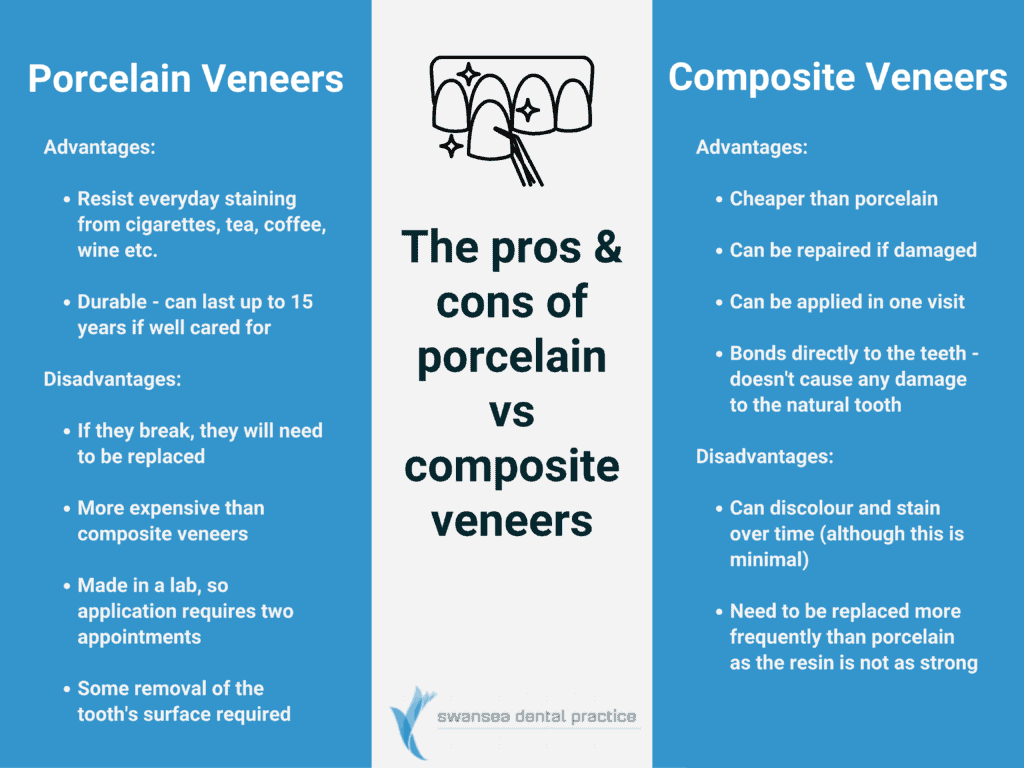
How long do veneers last?
Veneers can last up to 10 years, but potentially even longer if you have consistent and effective oral hygiene. Just like a check-up for your natural teeth, we recommend booking a check-up once every six months so we can give them a clean and determine if any maintenance is required.
To maintain the bright white colour and structural integrity of your veneers, be sure to brush and floss your teeth as normal — once in the morning and once before you go to bed. However, we do recommend giving them a brush after lunch, too, to keep them fresh and clean.
We also recommend booking a check-up two weeks after your veneers have been fitted. Here, you can share any concerns and ask any questions you may have about your veneers, and we can check in on the application.
How are veneers applied to teeth?
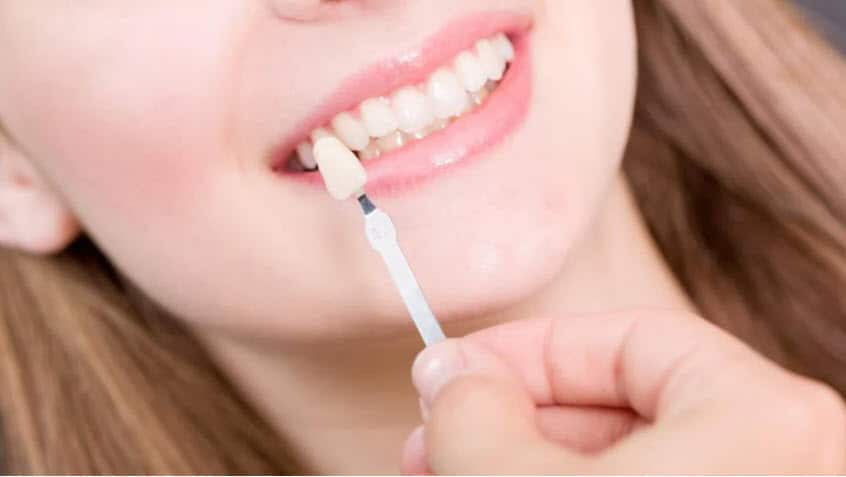
Image: North Sydney Dental Practice
Wondering how veneers are applied to teeth? The process is actually quite simple — the first step is to book a consultation at Swansea Dental Practice to discuss treatment options and allow our dentists to check the health and structure of your teeth. Veneers work best on teeth that don’t have large fillings or signs of disease.
If we determine that veneers are a good treatment option for you, we will then prepare your teeth for the veneers. If you are getting porcelain veneers, we will remove a small amount of tooth enamel from the front of the tooth so the porcelain “shells” can be applied.
This is a necessary step to ensure the veneer doesn’t look bulky or unnatural after the application.
We will then take an impression of your teeth to be sent off to the dental laboratory where your veneers will be designed and fabricated to your unique specifications.
Finally, we will give you a call to come in to have your veneers fitted. Here, we can adjust the fitting and bond the veneers to your teeth, and we can adjust the colour using different dental cement.
Veneers on teeth: before and after
Naturally, one of the major deciding factors is whether or not veneers will look good after the application. Both porcelain and composite veneers look incredible, turning imperfect teeth into a stunning smile with ease.
Here are a few examples of both composite and porcelain veneers before and after application.
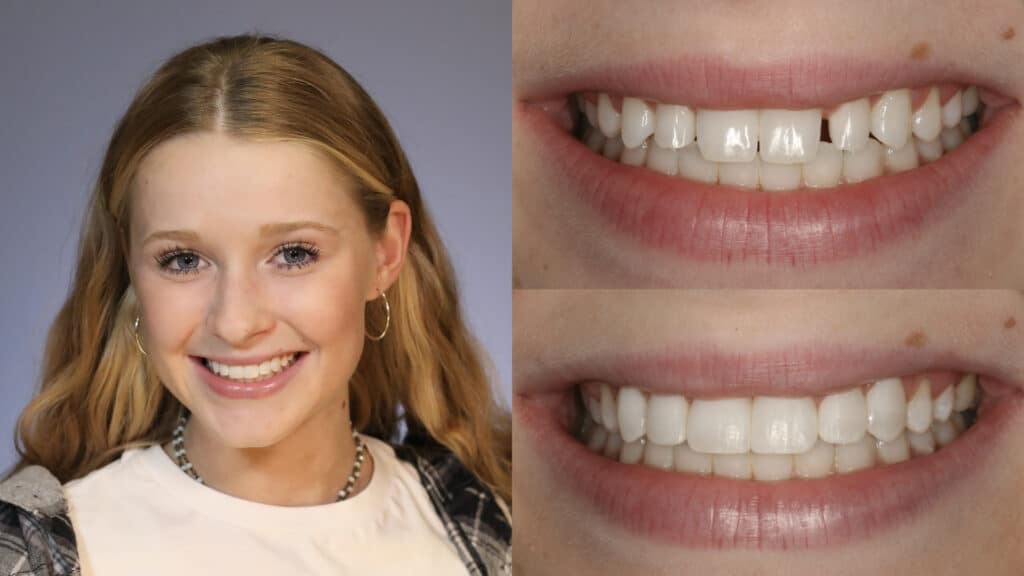
Image: Chicago Beautiful Smiles
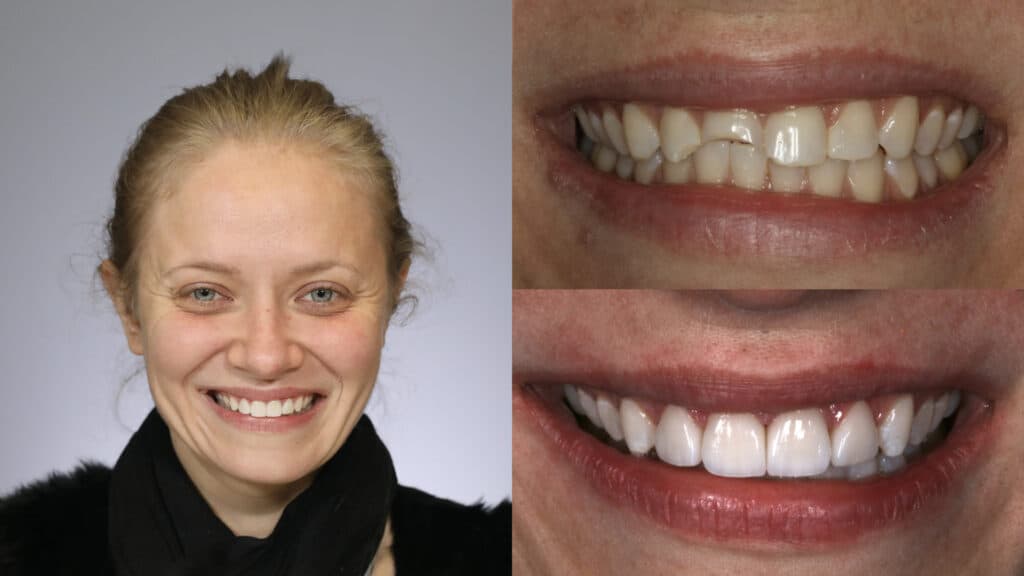
Image: Chicago Beautiful Smiles
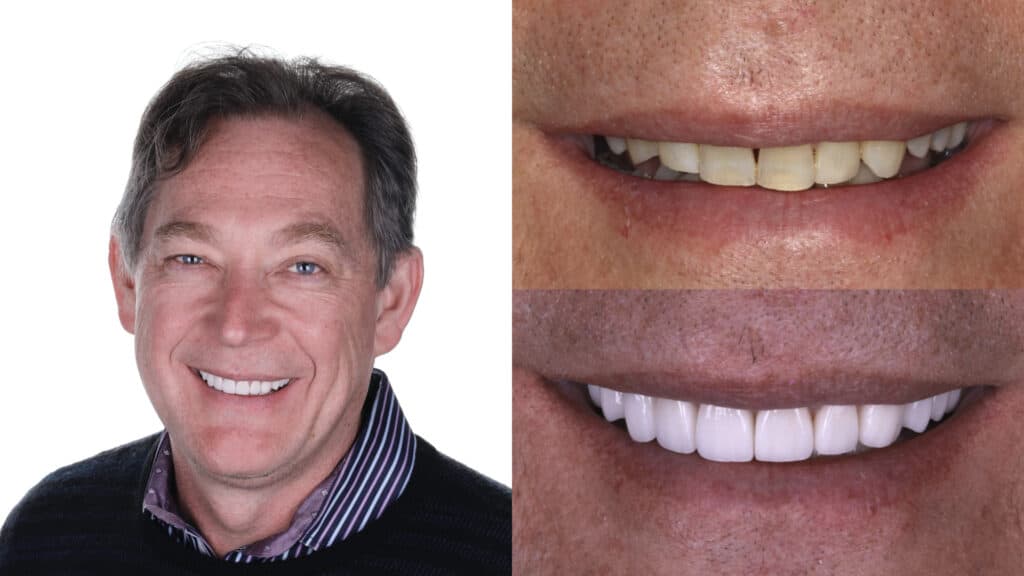
Image: Chicago Beautiful Smiles
Book a consultation with one of our experienced cosmetic dentists today!
Ready to start your journey to the perfect smile? Book an appointment with Swansea Dental Practice today! Our dentists can provide more information about dental veneers and walk you through the design and application process, and determine the best possible treatment option to restore your smile.
Contact us on (02) 4971 1432 to book an appointment today!
Feature Image: Unsplash

